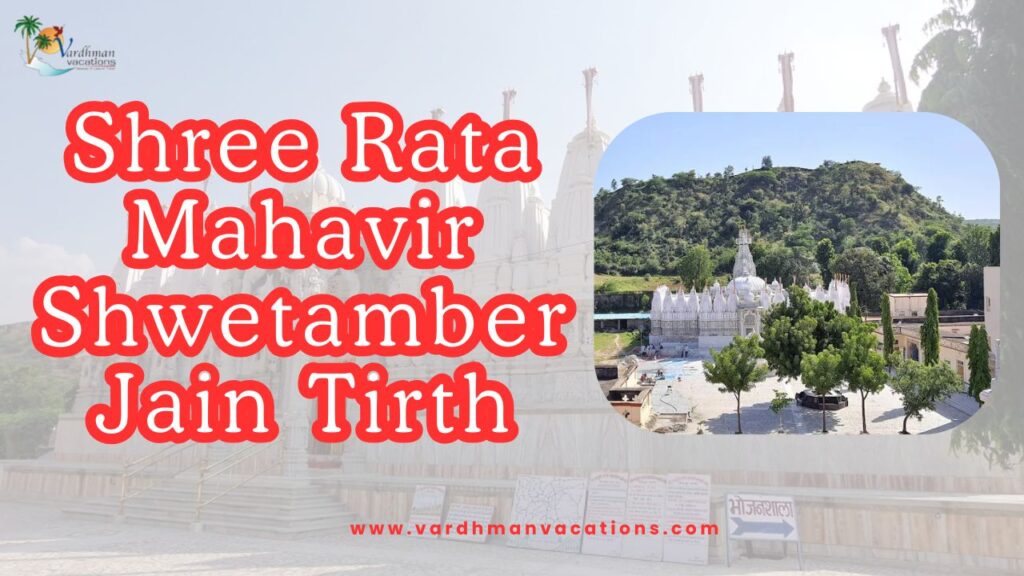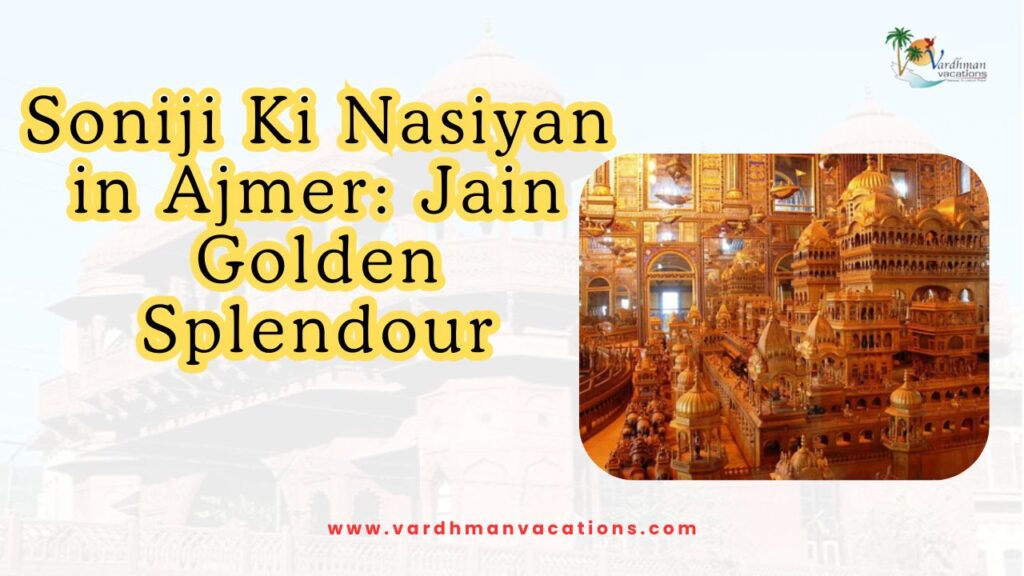India is one of the best places in the world for bird watching. With its lush green forests, vast landscapes, scenic grasslands, and rich wildlife, the country offers a paradise for bird lovers. Home to more than 1,300 bird species, India attracts both casual bird watchers and professional ornithologists from around the globe. Its diverse geography, climate, and natural habitats make it the perfect breeding and survival ground for countless bird species.
Over time, new species like the Nepal Wren Babbler have been discovered in the Himalayan forests, while some, like the Scops Owl and Bugun Liocichla, face the risk of extinction. Sadly, birds such as the Pink-headed Duck, Green Peafowl, and Himalayan Quail are already on the verge of disappearing. Critically endangered species like the Great Indian Bustard, Red-headed Vulture, Bengal Florican, and the once-famous Siberian Crane highlight the urgent need for conservation. In fact, the arrival of migratory birds like the Siberian Crane made Bharatpur Bird Sanctuary world-famous and encouraged the government to create safe habitats for them.
Today, India is home to several national parks and bird sanctuaries, offering travelers a chance to witness rare and colorful birds in their natural surroundings. If you are planning your next holiday, pack your binoculars and explore these top bird watching destinations in India!
Bharatpur Bird Sanctuary, Rajasthan
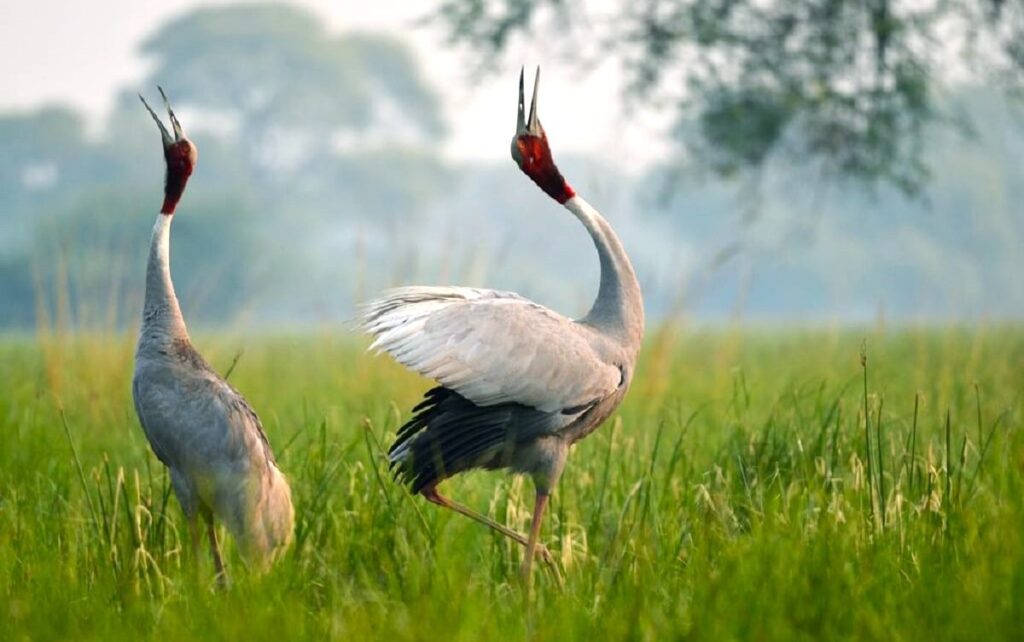
Also known as Keoladeo National Park, Bharatpur Bird Sanctuary is one of the most famous birding destinations in India. Recognized as a UNESCO World Heritage Site, a Ramsar Wetland, and an Important Bird Area (IBA), it is truly a paradise for bird lovers. Locally called Ghana, the sanctuary is surrounded by grasslands, woodlands, and wetlands, making it a perfect habitat for birds.
Interestingly, this site was once used as a waterfowl hunting ground by the royals and the British, but in 1971, it was declared a protected bird reserve. Today, the sanctuary is home to 400+ bird species and welcomes thousands of migratory birds every winter. Some of the popular species spotted here include Painted Storks, Spoonbills, Darters, Purple Herons, Indian Cormorants, Nightjars, Owlets, and Indian Coursers.
Visitors can explore the sanctuary on cycle-rickshaw rides, walking trails, or photography tours, making it a delightful experience for birdwatchers and wildlife photographers. Apart from birding, travelers can also enjoy adventure activities like zip-lining, rappelling, archery, rifle shooting, and Burma bridge walks nearby.
Timings: 8:00 AM – 5:00 PM
How to Reach?
The nearest railway station is Bharatpur Junction. The closest airports are in Jaipur, Agra, Delhi, and Lucknow. Taxis and cabs are easily available via NH11.
Best Time to Visit
- August–November: Best for spotting local birds.
- October–February: Ideal for watching migratory species.
Nearby Tourist Attractions: Deeg Palace, Bharatpur Palace, Ganga Mandir, Government Museum, Lohagarh Fort, Laxman Mandir, Bankey Bihari Temple, and Kaman.
Sultanpur Bird Sanctuary, Haryana

Located just 40 km from Delhi (Dhaula Kuan), Sultanpur Bird Sanctuary is the perfect weekend escape for nature lovers and birdwatchers. Surrounded by greenery and wetlands, it offers a peaceful environment to spot both resident and migratory birds.
The Haryana government has upgraded it to a National Park because of its rich diversity of birdlife. Every year, migratory birds travel from distant regions like Europe, Siberia, and Central Asia, making this spot one of the top bird watching destinations in North India. The sanctuary is home to around 250 bird species, especially during peak season.
- Resident Birds: Common Hoopoe, Purple Sunbird, Painted Stork, Black Francolin, Indian Roller, Spotted Owlet, and Bank Myna.
- Winter Migratory Birds: Siberian Crane, Greater Flamingo, Black-winged Stilt, White Wagtail, Rosy Pelican, Spotted Redshank, and Eurasian Wigeon.
- Summer Migratory Birds: Asian Koel, Grey Heron, Indian Golden Oriole, Blue-cheeked Bee-eater, and Cuckoos.
Birdwatchers and photographers can use watchtowers placed at different points for the best views, while the Interpretation Centre provides educational guidance about the sanctuary and its species.
Timings: 7:00 AM – 4:30 PM (Closed on Tuesdays)
How to Reach?
The nearest airport is Indira Gandhi International Airport (48 km). Gurgaon Junction (46 km) is the closest railway station. Metro services from Delhi to Gurgaon are also available. Taxis, autos, or personal vehicles can be used to reach the sanctuary.
Best Time to Visit
- September to February, for winter migratory birds
- Summer months are good for spotting summer migratory birds.
Nearby Tourist Attractions: Sheetala Devi Temple, Qutub Minar, Damdama Lake, Garden of Five Senses, Golden Greens Golf & Resort, Baoli Ghaus Ali Shah, Cawn Sarai, John Hall.
Chilka Lake Bird Sanctuary, Odisha

Chilka Lake in Odisha is Asia’s largest saltwater lagoon, making it a paradise for both resident and migratory birds. Covering about 1,100 square kilometres across Puri, Khurda, and Ganjam districts, the sanctuary is shaped like a pear and offers breathtaking natural beauty.
The sanctuary hosts more than 160 bird species that migrate from far-off places like the Caspian Sea, Lake Baikal, Aral Sea, Mongolia, Central and Southeast Asia, the Himalayas, and Russia. Visitors can enjoy watching the birds fly, feed, and breed around the lake, creating a spectacular sight for birdwatchers and nature photographers alike.
Boat safaris are the most popular way to explore the lake, and the sunrise and sunset views make it even more magical. Chilika Lake is also known as the largest breeding site for flamingos in the world. Other migratory birds commonly spotted here include White-bellied Sea Eagles, Purple Moorhens, Greylag Geese, Jacanas, Flamingos, and Herons.
Timings: 7:00 AM – 5:00 PM
How to Reach:
- Nearest Airport: Bhubaneswar Airport (120 km)
- Nearest Railway Stations: Bhubaneswar, Puri, and local Balugaon station
- Well-connected by NH-5, bus services, taxis, autos, and cabs are also available.
Best Time to Visit: October to March; avoid monsoon season due to heavy rains.
Nearby Tourist Attractions: Banapur, Salia Dam, Puri, Narayani, Brahmaputra, Satapada, Nalabana Bird Island, Kalijai Island, and Mangalajodi.
Ranganathittu Bird Sanctuary, Karnataka

Located in Mandya district, Karnataka, Ranganathittu Bird Sanctuary is one of the most popular birdwatching destinations in India. Surrounded by the Kaveri River, this sanctuary offers a vibrant mix of colorful bird species and a rich natural experience for visitors of all ages.
Covering 67 square kilometres, the sanctuary consists of six small islands and is the largest bird sanctuary in Karnataka. It is home to around 170 bird species, including Asian Openbill Stork, Black-headed Ibis, Woolly-necked Stork, Common Spoonbill, Painted Stork, River Terns, Egrets, Indian Roller, and Spot-billed Pelicans. Visitors can enjoy birdwatching, boating, and nature photography, making it a paradise for photographers and nature enthusiasts.
Apart from birds, visitors may also spot marsh crocodiles during boat rides, along with wildlife such as Bonnet Macaque, Flying Fox, Indian Grey Mongoose, and Monitor Lizards. Guided tours are available, ensuring a safe and educational experience for all.
Timings: 9:00 AM – 6:00 PM
How to Reach?
- Nearest Airport: Mysore Airport
- Nearest Railway Station: Srirangapatna Railway Station (5 km)
The sanctuary is 19 km from Mysore city and can be reached by cab, taxi, or bus. Government and private buses run regularly between Mysore and Srirangapatna. Walking is also an option for nearby visitors.
Best Time to Visit: November to March (winter months) for the best chance to see migratory birds.
Nearby Tourist Attractions: Devaraja Market, Srirangapatna Fort, Mysore Palace, Melkote, Gumbaz Burial Chamber, Venugopala Swamy Temple, Karanji Lake, Sri Chamarajendra Zoological Gardens, Sri Ranganathaswamy Temple.
Kumarakom Bird Sanctuary, Kerala
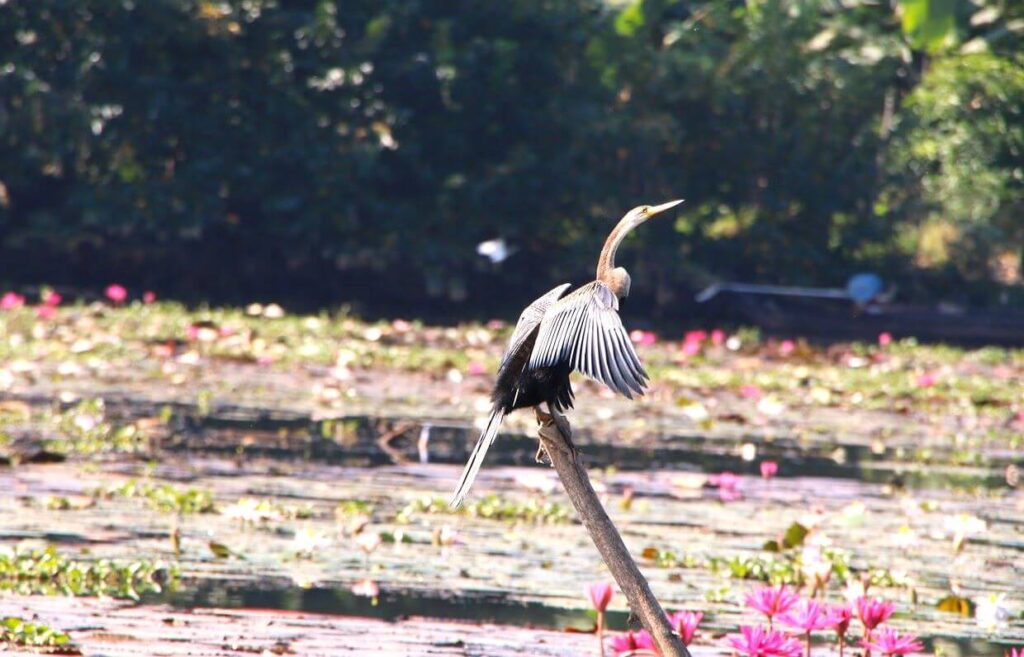
Nestled in Kottayam district, Kumarakom Bird Sanctuary—also called Vembanad Bird Sanctuary—lies close to the Vembanad Lake, Kerala’s largest lake. The sanctuary was originally part of Baker’s Estate, established in 1847 for rubber plantations by George Alfred Baker. Spread across 14 acres, it is the first scientifically formed and preserved bird sanctuary in India, home to around 180 bird species. The lush mangroves, fertile soil, and tropical habitat make it a paradise for both resident and migratory birds.
Visitors can spot a wide variety of birds, including waterfowl, cuckoos, owls, egrets, moorhens, darters, herons, Brahminy Kites, and migratory birds like Siberian Crane, Lark, Parrot, Teal, Steppe Eagle, Booted Eagle, Flycatchers, and Purple Moorhens. Boat safaris, houseboat cruises, and motorboat rides make birdwatching here even more enjoyable, providing stunning views of birds flying over the lake.
Timings: 6:00 AM – 5:00 PM
How to Reach?
- Nearest Airport: Cochin International Airport (94 km) via NH 66
- Nearest Railway Station: Kottayam Railway Station (12 km)
Taxis, cabs, autos, and bus services are available. Well-connected roads make it easy to reach from Kochi, Kottayam, Kakkanad, and Alappuzha.
Best Time to Visit:
- November–February: Best for migratory birds
- June–August: Ideal for spotting resident birds
Nearby Tourist Attractions: Aruvikkuzhi Waterfall, Nehru Snake Boat Race, Vembanad Lake, Vagamon Hill Station, Alleppey Beach, Alappuzha Lighthouse, Marari Beach, and Jatayu Rock.
Neora Valley National Park, West Bengal

Located in Kalimpong district of the Eastern Himalayas, Neora Valley National Park is a haven for bird lovers, wildlife enthusiasts, and nature photographers. Named after the nearby Neora River, the park spans 90 square kilometres and is one of the most biologically rich areas in India. Its stunning valleys and lush forests provide a perfect backdrop for exploring the diverse wildlife.
The park is home to over 265 bird species, making it a prime destination for birdwatching. Some of the rare and unique species found here include Satyr Tragopan, Rusty-bellied Shortwing, Rufous-throated Partridge, and White-tailed Robin. Visitors can enjoy observing birds in flight, resting in nests, or caring for their chicks, creating unforgettable wildlife experiences.
Timings: 8:00 AM – 12:00 PM, 1:00 PM – 4:00 PM (Closed on Thursdays)
How to Reach?
- Nearest Airport: Bagdogra Airport (115 km)
- Nearest Railway Station: New Jalpaiguri Junction (NGP)
From there, visitors can rent a car or take a public bus. Nearby cities like Cooch Behar, Siliguri, Jalpaiguri, and Kolkata are easily connected by road.
Best Time to Visit
- March–April: Spring season, best for birdwatching and orchids in bloom
- October–January: Winter months, ideal for clear mountain views
- Closed: Mid-June to mid-September (monsoon season)
Nearby Tourist Attractions: Changey Waterfall, Kolakham Village, Kalimpong Science Centre, Deolo Hill, Morgan House, Ringking Farm, Thongsa Gompa, and Mangal Dham.
Kaziranga National Park, Assam
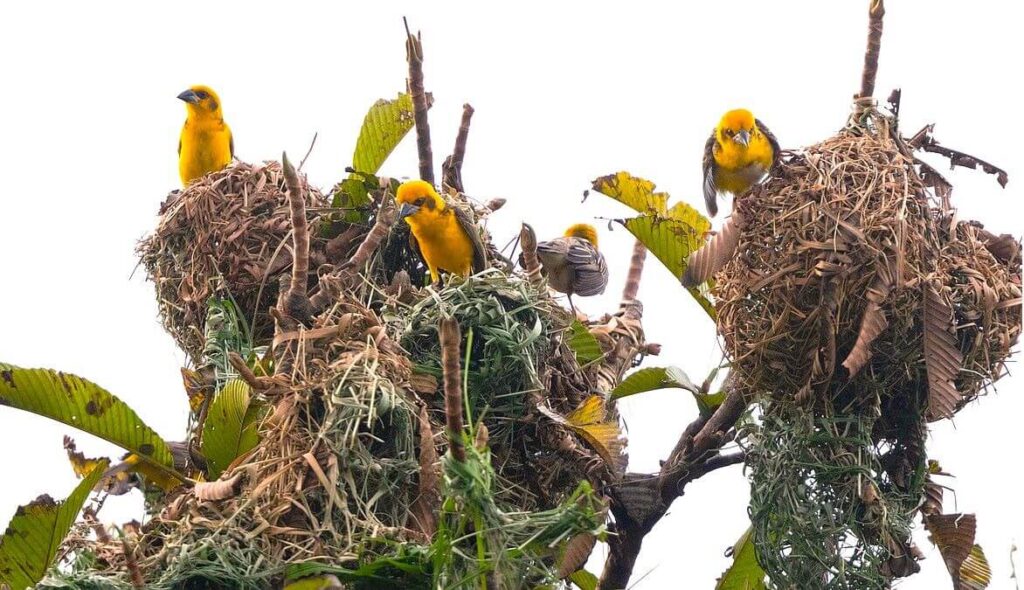
Located on the northern and eastern banks of the Brahmaputra River, Kaziranga National Park is a UNESCO World Heritage Site spanning 378 square kilometres. Known for its tall grasslands, marshes, and forests, the park provides a perfect habitat for both resident and migratory birds, making it one of the best birdwatching destinations in India. The river bodies and lakes in the park also provide ample food sources for the birds.
Kaziranga is home to over 500 bird species, including the Great Indian Hornbill, Bengal Florican, Asian Barred Owlet, White-winged Duck, Indian Roller, as well as many species of eagles, herons, storks, and waterfowl. Some of the rarest species found here include Collared Treepie, Green-tailed and Ruby-cheeked Sunbird, Sultan Tit, Scarlet-backed Flowerpecker, Long-tailed Sibia, and Mountain Tailorbird.
Visitors can enjoy the serene environment while observing birds in their natural habitat. Jeep safaris are available for exploring the core zones, and permissions are provided to access the buffer zones. This park is ideal for birdwatchers, wildlife enthusiasts, and photographers eager to spot endangered and exotic bird species.
Timings: 7:30 AM – 10:00 AM; 1:30 PM – 3:00 PM
How to Reach?
- Nearest Airports: Guwahati International Airport (217 km) and Jorhat Airport (97 km)
- Nearest Railway Station: Furkating (75 km); Guwahati and Jorhat stations are also convenient
The park’s main gate is at Kohora, accessible via NH37. Cabs, taxis, and buses are available from nearby cities.
Best Time to Visit: October to April, with November–March being ideal for birdwatching and wildlife safaris. Avoid the monsoon season due to flooding from the Brahmaputra.
Nearby Tourist Attractions: Panbari Reserve Forest, Manas National Park, Kakochang Waterfall, Orang National Park, Agnigarh Hill, Kalia Bhomora Setu, Chitralekha Udyan, and local tea gardens.
Binsar Wildlife Sanctuary, Uttarakhand
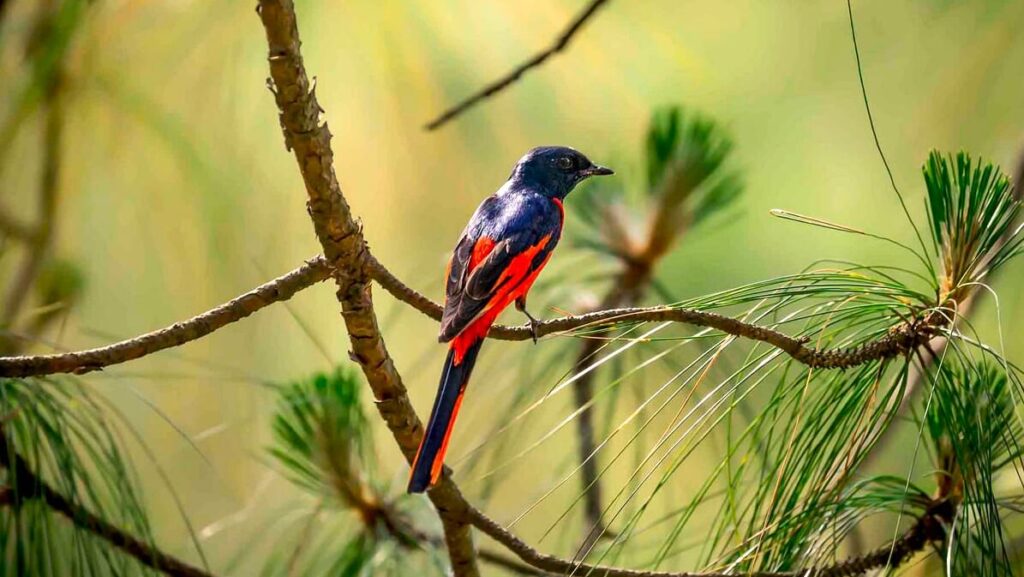
Nestled in the scenic Himalayan region of Uttarakhand, Binsar Wildlife Sanctuary is surrounded by lush forests and diverse wildlife. Named after the nearby village of Binsar, which was once the summer capital of the Chand Dynasty, the sanctuary covers 45 square kilometres and is famous for its rich bird population. Birdwatchers flock here to spot beautiful Himalayan species like the Himalayan Monal and Kalij Pheasant.
Binsar is home to over 250 bird species, making it one of India’s best birdwatching destinations. Some of the rare and notable birds include Blackbirds, Nuthatches, Forktail, Laughingthrush, Magpies, Koklas, and Woodpeckers. Visitors can enjoy walking trails with guided tours, observing birds flying freely or resting in their nests, offering a once-in-a-lifetime experience for nature lovers.
Timings: 9:00 AM – 7:30 PM
How to Reach?
- Nearest Airport: Pantnagar Airport (152 km)
- Nearest Railway Station: Kathgodam
The sanctuary is well connected by road, with taxis, cabs, and government buses available from nearby towns. Regular flights and trains connect to major cities in India.
Best Time to Visit: February to April and October to November, when spring and autumn provide pleasant weather and excellent birdwatching opportunities. Average temperatures during these months are around 23°C.
Nearby Tourist Attractions: Binsar Zero Point, Maa Nanda Devi Mandir, Kasar Devi Temple, Chitai Golu Devta Temple, Bineshwar Mahadev Temple, Khali Estate, and Katarmal Sun Temple.
Thattekad Bird Sanctuary (Salim Ali Bird Sanctuary), Kerala

Designed by the legendary ornithologist Dr. Salim Ali, Thattekad Bird Sanctuary, also known as Salim Ali Bird Sanctuary, is one of the richest bird habitats in Peninsular India. Nestled along the Periyar River in the Western Ghats, this sanctuary is a paradise for birdwatchers, nature photographers, and wildlife enthusiasts.
The sanctuary is home to over 270 bird species, including both resident and migratory birds. Common species include Black-winged Kites, Bee-eaters, Shrikes, Sunbirds, and Grey-headed Fishing Eagles, while rare species like the Nilgiri Laughingthrush, Malabar Grey Hornbill, and Broad-tailed Grassbird attract bird enthusiasts from around the world. The sanctuary’s teak and sandalwood vegetation provides an ideal habitat for these avian species.
Visitors can explore walking trails throughout the sanctuary, with professional guides offering knowledge about the birds. In addition to birdwatching, the sanctuary offers butterfly watching, nature walks, photography, trekking, and boating.
Timings: 7:00 AM – 5:00 PM
How to Reach?
- Nearest Airport: Kochi International Airport
- Nearest Railway Station: Aluva Railway Station
State-run and private buses, taxis, cabs, autos, and rickshaws are available for local transport.
Best Time to Visit: October to March is ideal for spotting the maximum number of resident and migratory birds during the breeding season. Avoid summer and monsoon due to heat and heavy rainfall.
Nearby Tourist Attractions: Nadukani, Bhoothathankettu Dam, Kollakadavu Eco Point, Inchathotty Suspension Bridge, Malayattoor, Kodanad, Kalady, Wellington Island.
Nalsarovar Bird Sanctuary, Gujarat

Nalsarovar Bird Sanctuary is the largest wetland bird sanctuary in Gujarat, covering around 123 square kilometres. The sanctuary features a vast lake surrounded by swamps and marshes, providing an ideal habitat for resident and migratory birds.
The sanctuary is home to over 250 bird species, including pelicans, egrets, flamingos, herons, cranes, and many more. Every year, huge flocks of migratory birds from Siberia, Oman, UAE, and other regions visit Nalsarovar, making it one of the top birdwatching destinations in Gujarat. Resident species include Rosy Pelicans, Lesser and Greater Flamingos, Crakes, Brahminy Ducks, Bitterns, and Grebes.
Visitors can enjoy a variety of activities such as birdwatching, nature photography, bamboo boating, and horseback riding. Boat safaris are popular for exploring the sanctuary, and weekends attract large numbers of tourists and bird enthusiasts from nearby Ahmedabad.
Timings: 6:00 AM – 5:30 PM
How to Reach?
- Nearest Airport: Sardar Vallabhbhai Patel International Airport, Ahmedabad (64 km)
- Nearest Railway Station: Viramgam Railway Station
- Nearest Bus Station: Viramgam (40 km)
Taxis and cabs are recommended for a hassle-free journey from Ahmedabad.
Best Time to Visit: November to April (winter and spring), when migratory birds arrive and the weather is cool and comfortable.
Nearby Tourist Attractions: Utelia, Wadhwan, Zanzari Waterfall, Wild Ass Sanctuary, Thol Lake Sanctuary, Lothal, and Indroda Nature Park.
Final Thoughts
For bird lovers, photographers, and ornithologists, India is a paradise to explore rare and unique bird species from across the world. The country’s national parks, wildlife reserves, and bird sanctuaries provide safe habitats for these birds, many of which travel long distances to breed here.
The winter and spring months are the best time to witness these magnificent creatures in their natural environment. Whether you are a nature enthusiast, a photographer, or an ornithologist, the 10 destinations listed above offer a perfect opportunity to experience the diverse and vibrant birdlife of India. These sanctuaries are not just for birdwatching—they are ideal getaways to enjoy the beauty of nature and the serenity of India’s landscapes.
FAQ About Birdwatching Destinations in India
The best time to visit India for birdwatching is during the winter and spring months (October to March). Migratory birds arrive from far-off destinations during this period, and the weather is generally pleasant for exploring sanctuaries.
Some of the top destinations include:
Bharatpur Bird Sanctuary, Rajasthan
Sultanpur Bird Sanctuary, Haryana
Chilka Lake Bird Sanctuary, Odisha
Ranganathittu Bird Sanctuary, Karnataka
Kumarakom Bird Sanctuary, Kerala
Neora Valley National Park, West Bengal
Kaziranga National Park, Assam
Binsar Wildlife Sanctuary, Uttarakhand
Thattekad Bird Sanctuary, Kerala
Nalsarovar Bird Sanctuary, Gujarat
Yes, many Indian sanctuaries host migratory birds from Siberia, Europe, Central Asia, and other regions. The winter months are ideal for spotting these species.
Absolutely! Most sanctuaries provide watchtowers, boat safaris, and guided tours, making them ideal for nature and wildlife photography.
While some sanctuaries allow independent exploration, guided tours are recommended to spot rare birds and understand their habitat better.
Most bird sanctuaries are well connected by air, rail, and road networks. Major nearby cities usually have airports, railway stations, and good road connectivity with taxis or buses to reach the sanctuaries.
Yes, these locations are perfect for family trips, offering walking trails, nature walks, boat rides, and wildlife experiences suitable for all age groups.
It’s generally not recommended, as some sanctuaries experience flooding or heavy rainfall, making birdwatching difficult.






